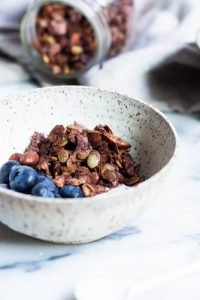Unusual But Amazing Workouts
 Unusual but amazing workouts can renew your interest in working out and help you get into shape while having a blast. Imagine walking your dog, while cross country skiing at the same time. It’s called Skijoring and there’s even races. While the dog does some of the work, having a harness and straps to pull you, it’s still a great workout and can be fun for both you and Rover. Dogs need exercise, too and it’s a great bonding experience. In the summer, you can do doga, which is doing yoga with the dog.
Unusual but amazing workouts can renew your interest in working out and help you get into shape while having a blast. Imagine walking your dog, while cross country skiing at the same time. It’s called Skijoring and there’s even races. While the dog does some of the work, having a harness and straps to pull you, it’s still a great workout and can be fun for both you and Rover. Dogs need exercise, too and it’s a great bonding experience. In the summer, you can do doga, which is doing yoga with the dog.
Love karaoke, but also want exercise?
Try this new version of spin class, called Karaoke spin. It’s also known as cycle karaoke. When you’re singing while you spin, it helps breathing techniques and gives your lungs more of a workout. If you can’t easily sing while you’re pedaling, you’re not pedaling hard enough. It reminded me of a client who thoroughly enjoyed giving her kids a zinger. She used to ride bike with them and when she felt it was right, sang at the top of her lungs while pedaling. Needless to say, she had to pedal pretty hard to keep up with her kids who were fleeing her in embarrassment.
Jukari Fit to Fly is made for the adventurous.
If you loved the jungle gym and trapeze as a kid, you’ll love Jukari Fit to Fly. This workout uses a trapeze-like apparatus that helps you tone your body. It lets you swing, fly, spin and jump while you’re feeling like the top performer at a Vegas Cirque du Soleil review, except you’re far closer to the ground. In fact, it was created by collaboration between Cirque du Soleil and Reebok, so it should feel authentic.
If you are a fan of Bollywod movies, Doonya may be for you.
If the dance moves of Slum Dog Millionaire made you smile, imagine how great you feel when you do them on your own. This high energy workout will help you building strength and flexibility, while building your cardio. It offers the unique sounds and movements that sets it apart from other dance exercise classes.
- If you’ve ever watched your hamster in an exercise ball, you’ll appreciate what it must be like when you try water walking. Some deem this mode of exercise dangerous, particularly if you have an untrained operator, so do your homework before you decide to try it and only work with the best.
- Try Capoeira, an artform from Brazil that uses dance movement, combat moves and special music to improve agility, flexibility, strength and speed.
- Try Krav Maga, an Israeli hand-to-hand combat technique that uses instinctive reactions for self-defense.
- Take a pole dancing class, but if you’re not that adventurous, try polga. Polga combines yoga with pole dancing to provide benefits in all areas of fitness; strength, flexibility, balance and endurance.



 The biggest cause of fitness program failure is quitting it before success was achieved. You need to identify how to stay motivated, once you’ve created your goals and the plan to achieve them. As a trainer, I find that most people want instant results and after the first few weeks, their enthusiasm and desire seem to wane. For some, it can even happen after the first few sessions. That’s why I also work on motivation. Some people find that knowing that someone is holding them accountable keeps them coming to the gym.
The biggest cause of fitness program failure is quitting it before success was achieved. You need to identify how to stay motivated, once you’ve created your goals and the plan to achieve them. As a trainer, I find that most people want instant results and after the first few weeks, their enthusiasm and desire seem to wane. For some, it can even happen after the first few sessions. That’s why I also work on motivation. Some people find that knowing that someone is holding them accountable keeps them coming to the gym.
 Are you sabotaging your calorie counting by subtracting the calories burned by exercise? Is calorie counting actually ruining your attempt to lose weight? There’s so many ways to fail to lose weight, you might think you need a big elaborate plan that must be followed to the letter, but in reality, the simpler you make it, the better off you’ll be. That’s why many people find that learning to eat smarter, not counting calories is the best method of weight loss.
Are you sabotaging your calorie counting by subtracting the calories burned by exercise? Is calorie counting actually ruining your attempt to lose weight? There’s so many ways to fail to lose weight, you might think you need a big elaborate plan that must be followed to the letter, but in reality, the simpler you make it, the better off you’ll be. That’s why many people find that learning to eat smarter, not counting calories is the best method of weight loss.
 If you want adequate nutrition for life, you need to learn how to make healthier choices when it comes to food. While there are all sorts of programs, including one called Nutrition for Life the key to all of them is eating healthier. You need all the important nutrients to have your body perform properly and keep your caloric intake lower. Choosing foods that are not processed or minimally processed is one key to a healthier lifestyle. Processing not only reduces the nutrients, it also may mean the addition of harmful chemicals that cause damage.
If you want adequate nutrition for life, you need to learn how to make healthier choices when it comes to food. While there are all sorts of programs, including one called Nutrition for Life the key to all of them is eating healthier. You need all the important nutrients to have your body perform properly and keep your caloric intake lower. Choosing foods that are not processed or minimally processed is one key to a healthier lifestyle. Processing not only reduces the nutrients, it also may mean the addition of harmful chemicals that cause damage.
 Lately, a lot of attention has been given to low carb diets. They aren’t anything new. The Atkins diet was a low carb diet and that came out over 45 years ago. While the Atkins diet was quite aggressive and extreme, since then a variety of modifications and new diets have been introduced. The Atkins diet promoted eating high fat foods and often left you feeling horrible. The extremely low carbohydrate content forces your body to burn fat with a by product of ketones. Those make you feel bad with nausea and headache, leave your breath less than desirable and leave you lightheaded. Unfortunately, once you quit the diet the weight returns quickly.
Lately, a lot of attention has been given to low carb diets. They aren’t anything new. The Atkins diet was a low carb diet and that came out over 45 years ago. While the Atkins diet was quite aggressive and extreme, since then a variety of modifications and new diets have been introduced. The Atkins diet promoted eating high fat foods and often left you feeling horrible. The extremely low carbohydrate content forces your body to burn fat with a by product of ketones. Those make you feel bad with nausea and headache, leave your breath less than desirable and leave you lightheaded. Unfortunately, once you quit the diet the weight returns quickly.
 Before identifying whether you need supplements, let me first be clear about what that means. The very name, supplement, implies that you’re only supplementing healthy eating, not replacing it. That’s all that supplements should do. The next factors necessary to answer the question is the type of supplement, your health, age and lifestyle. While vitamin C is important to a healthy life, if you’re eating healthy, you should get an adequate amount. That’s not considering someone who’s under a lot of stress, which requires extra vitamin C or someone who smokes. There are also supplements that are supposed to help you build muscles or lose weight.
Before identifying whether you need supplements, let me first be clear about what that means. The very name, supplement, implies that you’re only supplementing healthy eating, not replacing it. That’s all that supplements should do. The next factors necessary to answer the question is the type of supplement, your health, age and lifestyle. While vitamin C is important to a healthy life, if you’re eating healthy, you should get an adequate amount. That’s not considering someone who’s under a lot of stress, which requires extra vitamin C or someone who smokes. There are also supplements that are supposed to help you build muscles or lose weight.






